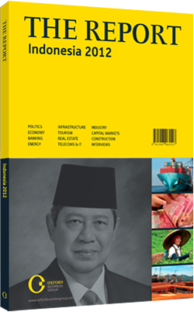Going micro: Targeting the low-income consumer market
The large low-income consumer market has become a testing ground for many industries in Indonesia, and insurance is no exception. The microinsurance segment, although still marginal relative to the industry as a whole, has recently been attracting the attention of mainstream underwriters in this regard. With over half of Indonesia’s population living on less than $2 a day, potential demand is enormous. Studies such as that run by Allianz, in conjunction with international donors like the UN Development Programme, suggest that low-income adults would be ready to spend between Rp10,000 ($1.20) and Rp50,000 ($6) a month for limited insurance coverage.
MICROCREDIT INSURANCE: Simple micro-products with low premiums and limited coverage have been available for years, but microcredit insurance schemes have long dominated the market. It is estimated that over 10m micro-enterprises have drawn microcredit from a formal institution, creating the large first pool of customers for this niche insurance market. Government programmes in this sector have contributed to the expansion and success of microcredit schemes, projects spearheaded by Bank Rakyat Indonesia (BRI), Bank Danamon and Bank Tabungan Pensiunan Nasional, among others. BRI’s microinsurance scheme, BRI ngin Life, has been very successful in bundling mandatory – as well as voluntary – credit life insurance with microcredit products. Asuransi Kredit Indonesia and Perusahaan Umum Jaminan Kredit Indonesia provide credit guarantees for micro-enterprises ordinarily rated as unbankable. But this microcredit insurance has created some moral hazards too, with defaults being unbearably high up until 2010. One challenge has been the absence of credit information on borrowers, although the establishment of a system of identification cards for all citizens will likely help this. Since 2010 the quality of microcredit has been steadily improving. Foreign insurers are increasingly looking to develop the microinsurance market beyond its current reliance on microcredit life coverage. Underwriters like Zurich Topas Life, Manulife and Prudential are looking to sell directly to customers through a micro-bank distribution strategy. As possibilities to partner with banks to run successful microcredit schemes open up, as with Bank Danamon in 2012, underwriters will aggressively compete for them. “Maintaining roll-out costs is key to the success of microinsurance,” Oemin Handajanto, president director of Zurich Topas Life, told OBG. “Partnerships with banks running successful microcredit programmes are in high demand.”
SALES NETWORK: Insurers are also looking at alternative sales networks – through local post offices for instance – to capture some of the growth in consumption on some of the country’s more remote islands. Asuransi Jiwa Nusantara, already a leader in life insurance, has entered the market in a big way. Using regional government bank branches as distribution centres, the underwriter has fast become the largest micro-underwriter. In non-life insurance, Asuransi Bangun Askrida has achieved similar dominance. Allianz Life launched a big push in microinsurance in 2010, hoping to treble the Rp9.5bn ($1.14m) in premium revenue it generates from its 440,000 low-income clients. It is sending more agents into rural Indonesia and seeking partnerships with rural banks and associations.
VOUCHERS: Some insurance companies are hoping to target the customer directly, and have launched voucher systems for simple non-life products with limited coverage. Dengyu Insurance has launched a scheme whereby clients purchase a Rp50,000 ($6) card for health insurance coverage and are covered up to Rp2m ($240). Although microinsurance is covered under existing insurance regulations, the government is clearly seeking to promote initiatives in this sector. While remaining vigilant of potentially high loss ratios and unviable operating costs, underwriters are innovating fast in this dynamic low-income market. If the market can be monetised in Indonesia, the success could well be replicated in other high-potential markets, like India.
You have reached the limit of premium articles you can view for free.
Choose from the options below to purchase print or digital editions of our Reports. You can also purchase a website subscription giving you unlimited access to all of our Reports online for 12 months.
If you have already purchased this Report or have a website subscription, please login to continue.

